Project Team
Architect: Shepley Bulfinch
General Contractor: J.H. Findorff & Son Inc
Green Roof Supplier & Installer: Omni Ecosystems
Landscape Architect: Omni Ecosystems
Owner: Carle Foundation Hospital
“This project was jumpstarted with emotion and clarity of meaning and it was riddled with challenges regarding logistics and implementation. Yet, it brings us joy as a team of designers and installers to push the boundaries and bring the most benefits and make sure all client needs were met”
“All of our green roof projects are important to us, but an immersive, people-centered and wheelchair accessible rooftop with significant technical requirements and in only 6 inches of media is really special”
A Place for Healing
Will's Garden, named after a former nature loving patient, is a new therapeutic garden at the Carle Foundation Hospital, a world-class, regional healthcare provider in Urbana, Illinois. Located on the facility's sixth floor, the garden provides a transformative, tranquil oasis for patients, family, and healthcare workers to escape the intensity of the hospital in a relaxing, nature-filled environment.
The garden is an accessible, year-round space offering fresh air, views, respite, healing, and restoration. It consists of brightly colored trees, shrubs, perennials, and potted plants intertwined with an immersive looping path that enables wheelchair and hospital bed access. Private seating nooks line the path allowing numerous parties of varying sizes to enjoy the space in solitude.
Design criteria included consideration of the existing hospital building’s extremely low structural load capacity and the site’s location above a neonatal intensive care unit. Wind uplift criteria also had to be met, so conforming to stringent loading parameters required careful tuning. Project goals were achieved using an ultra-lightweight horticultural growing media as the rooting substrate supporting plant growth. The result is a lush ecosystem growing in six inches of growing media.
Unlike typical growing media, the unique horticultural growing media contains the biological components essential for sustaining life. Through colonization, biochemistry, and strategic ecosystem development, the media supports microbial communities and plant life within a naturally occurring, contaminant-free geological substrate. Concurrently, this substrate promotes exceptional stormwater management.
The landscape architect led design team comprised specialists in microbiology, ecology, and horticulture.
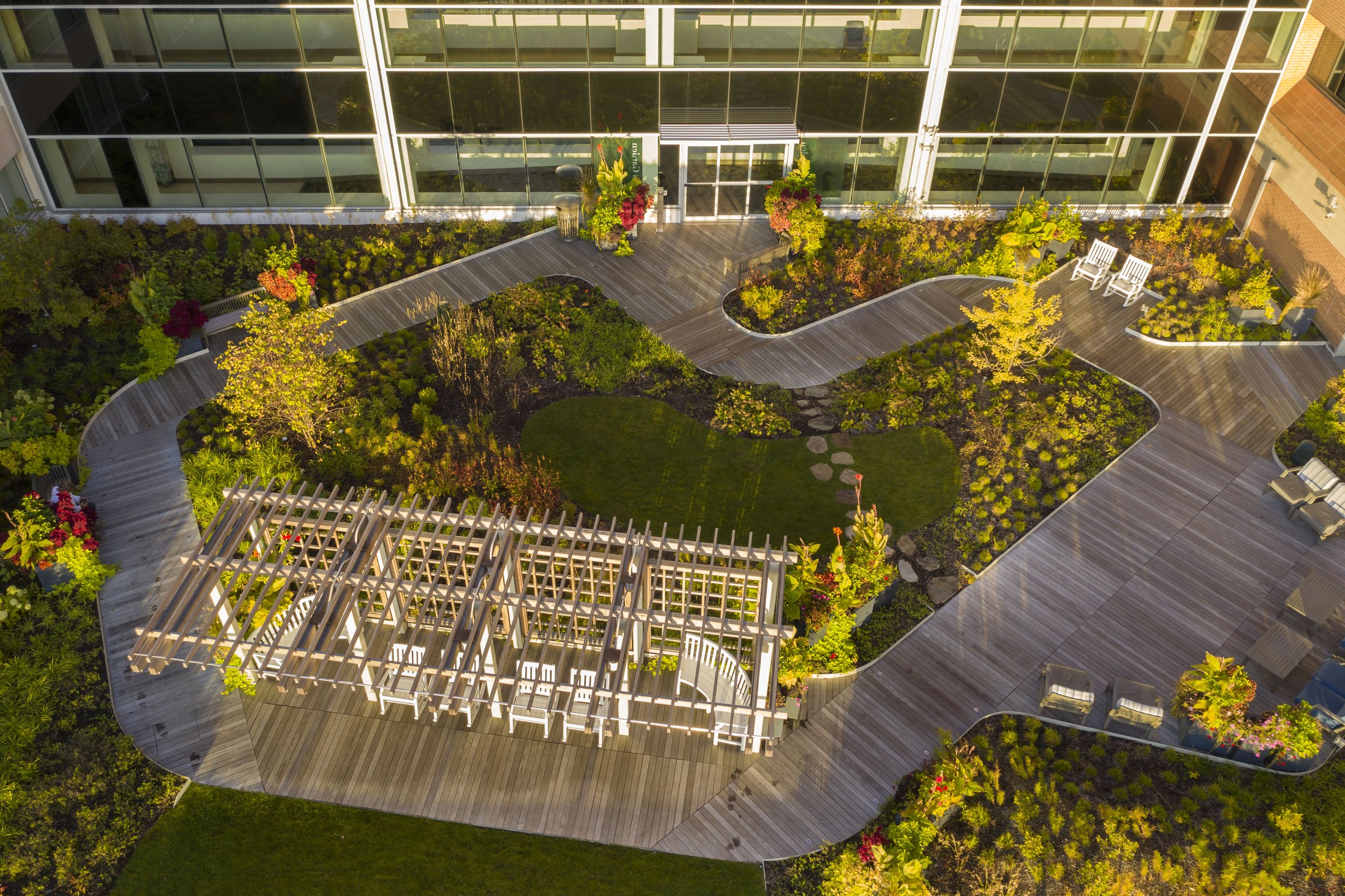

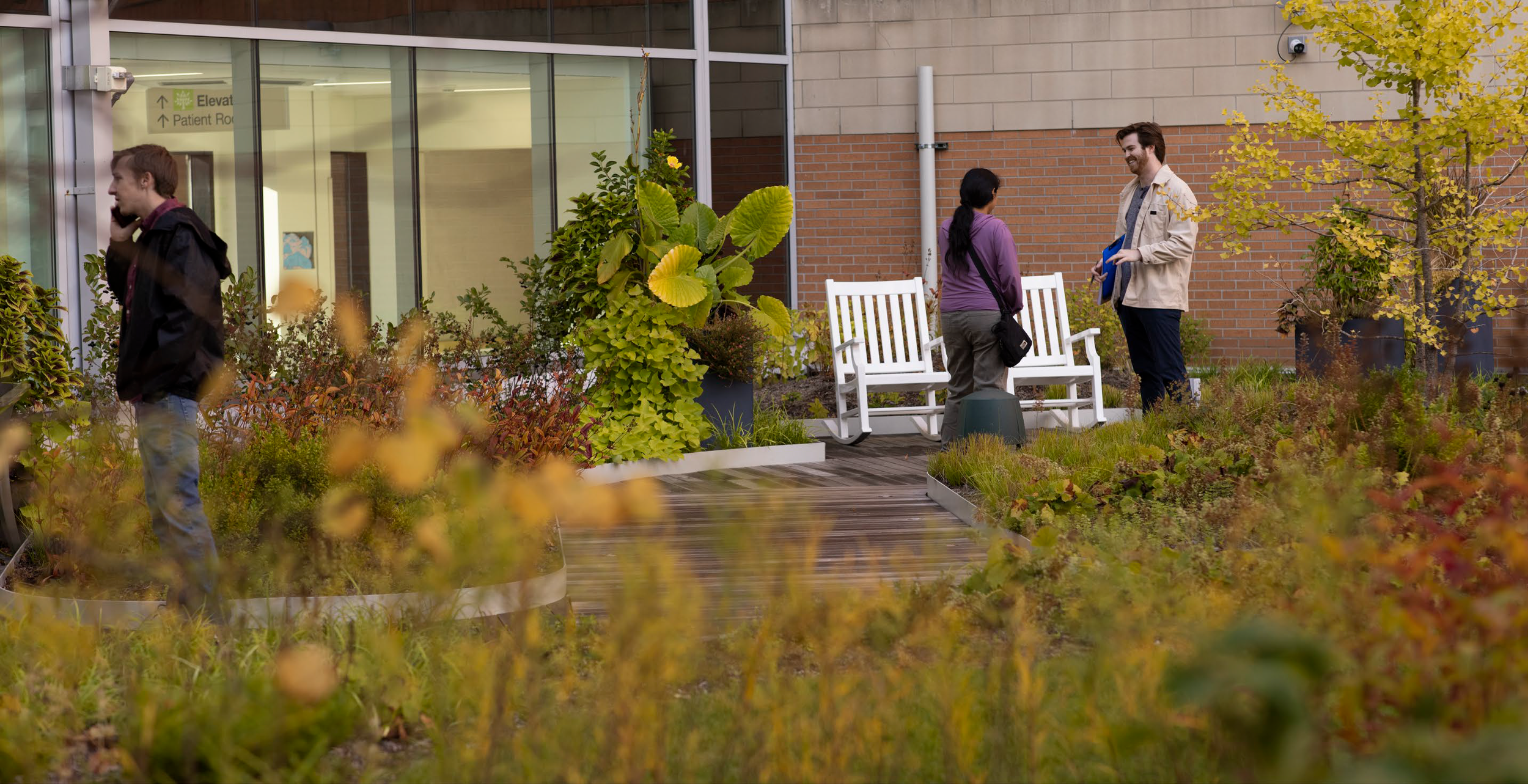
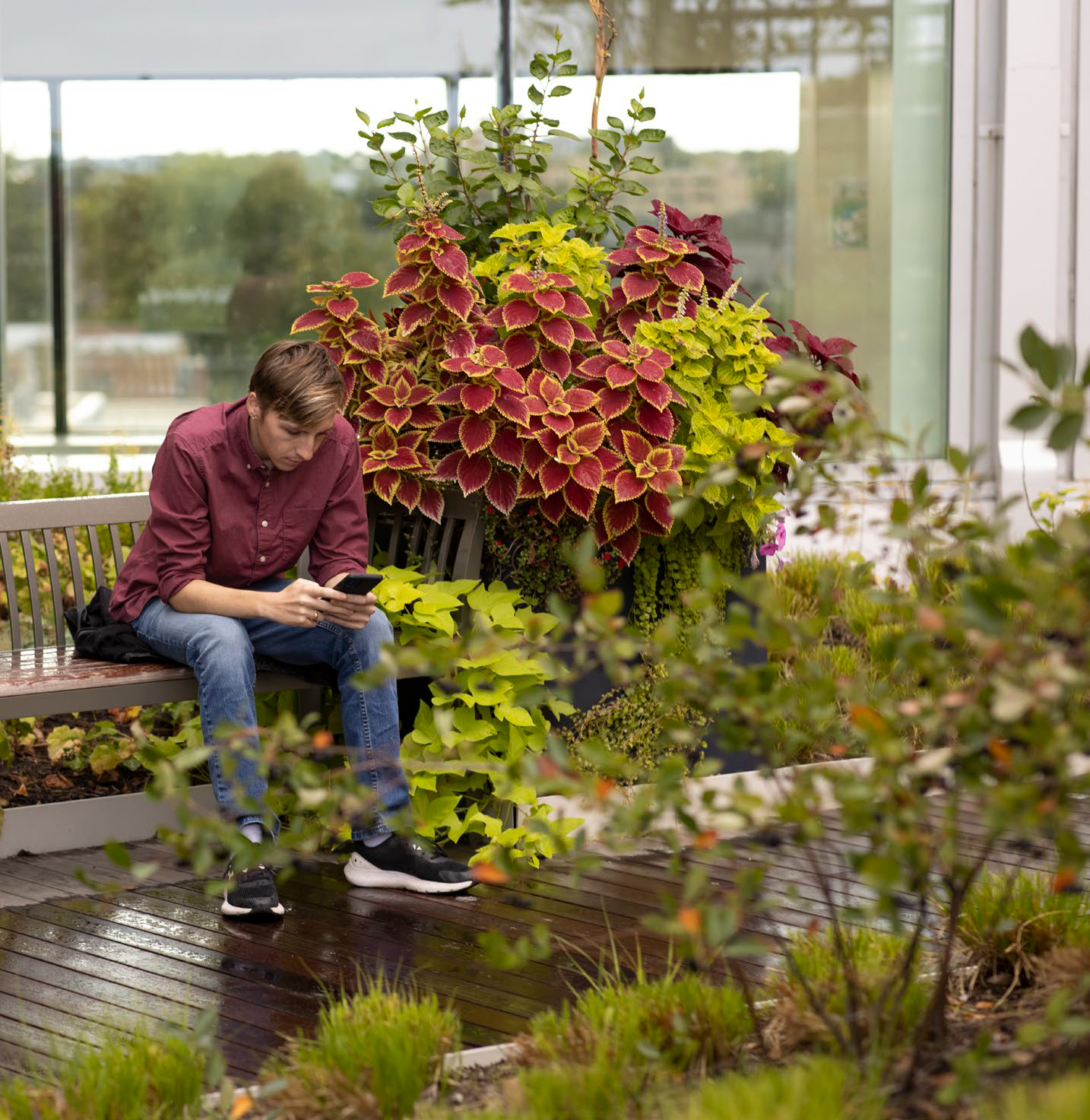
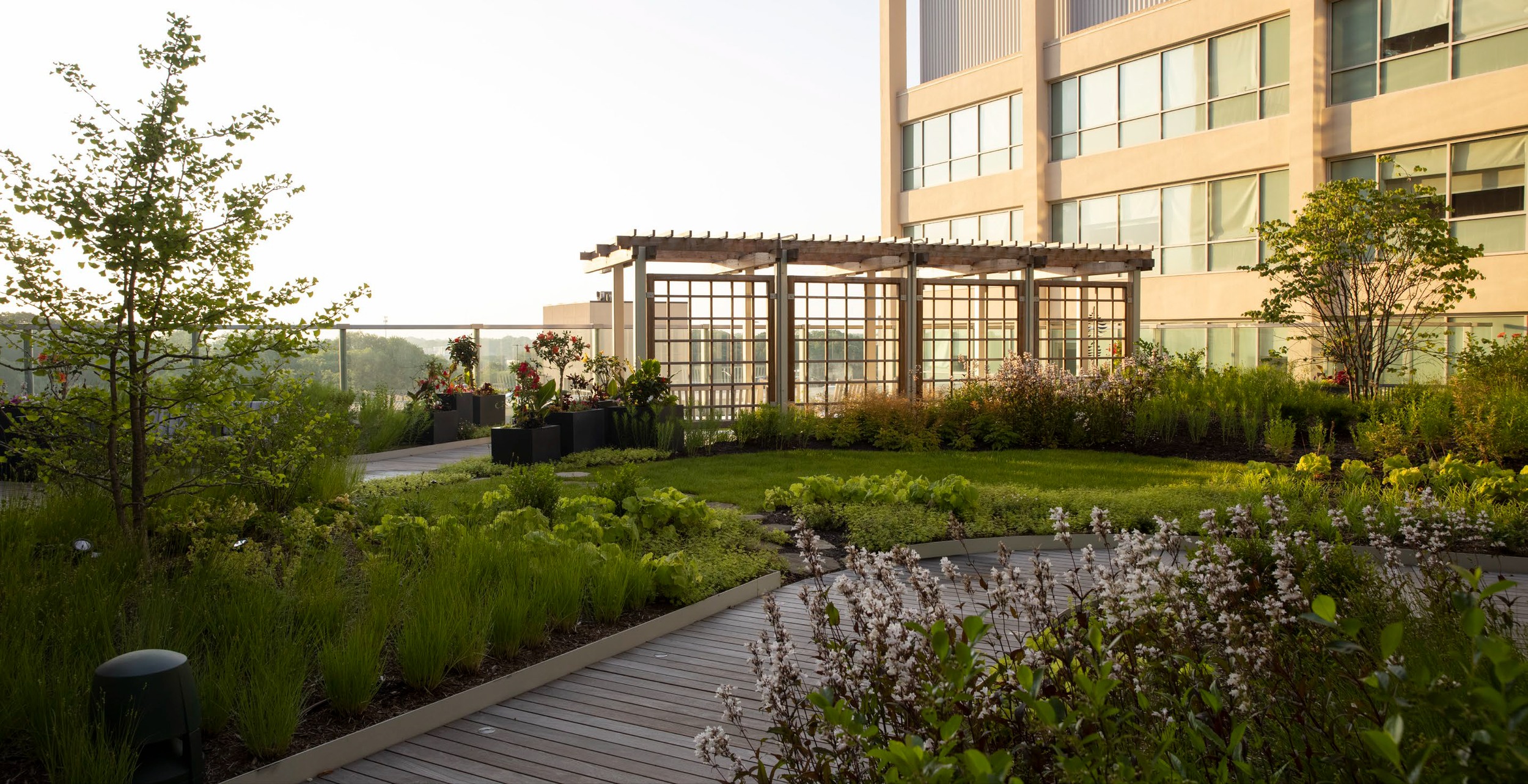
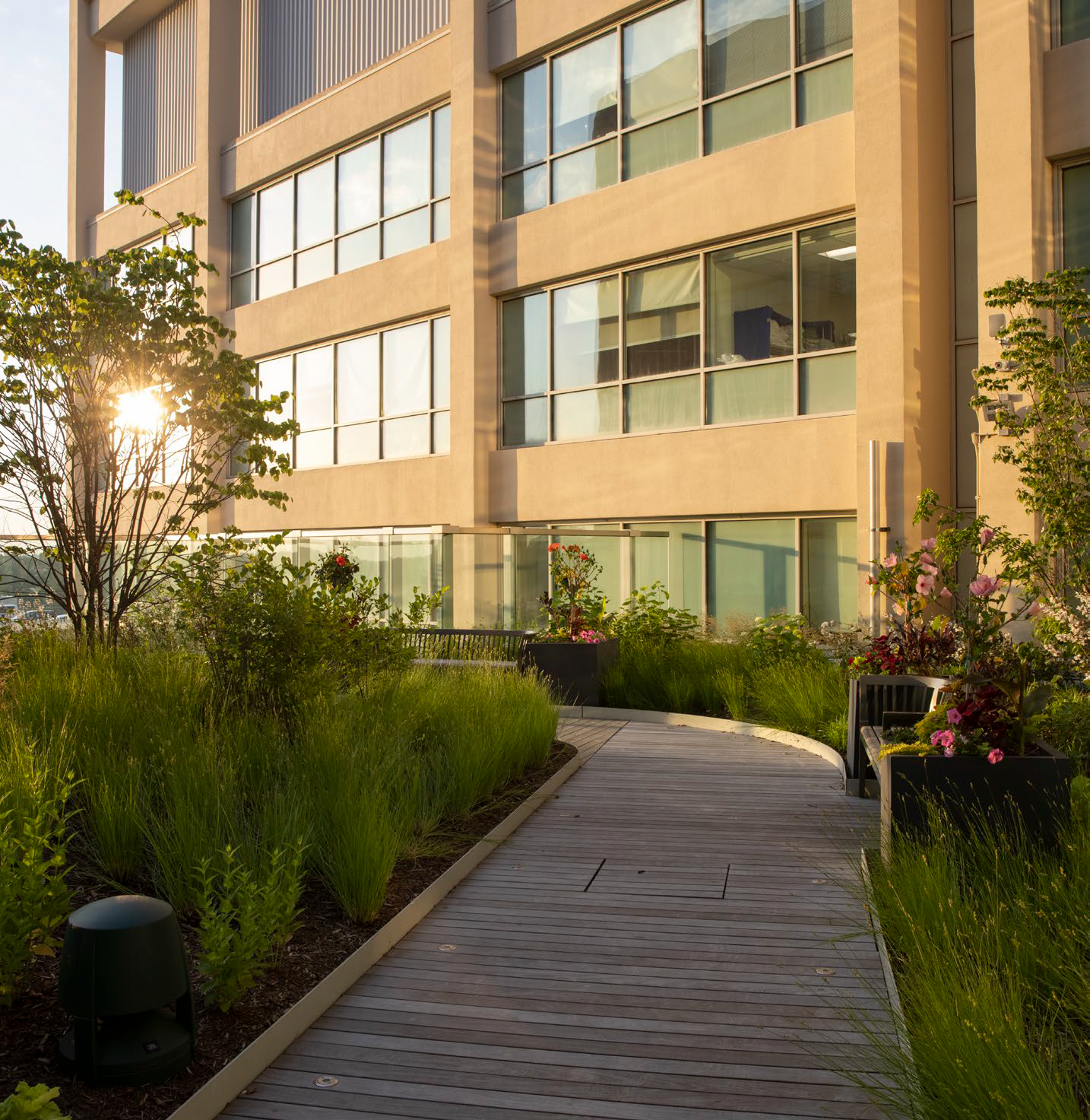
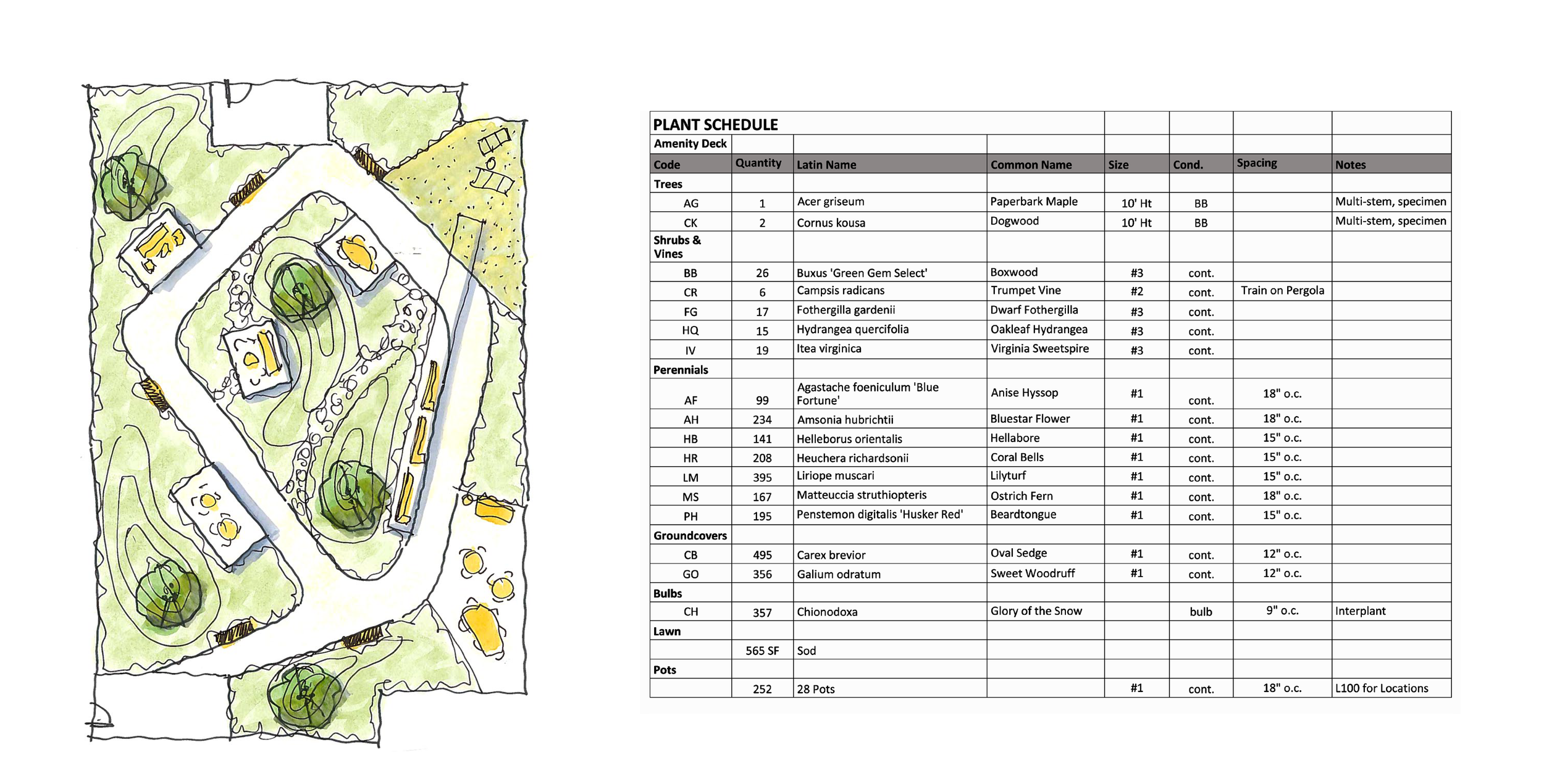
This project relies on the special horticultural growing media to exist. The unique growing media has a high porosity, which makes it lightweight - essential to creating this project on an existing structure with limited surplus capacity. The high porosity also yields significant stormwater management service. This means better stormwater management and better retention for plant use. A project-specific, efficient irrigation system was designed and installed to support long-term plant health while balancing water conservation and efficiency.
The design addresses the emotional challenges faced by patients, families, care-givers, and healthcare workers by providing private, peaceful spaces in nature, allowing opportunity for healing, compassion, and grief. The intentionally crafted therapeutic garden offers respite from the facility’s clinical aspects with a highly accessible, natural setting.
Routine application of pesticides is not required by the maintenance plan. Pesticides are unlikely to be used on this project when the maintenance plan is correctly followed. Annual growing media testing for fertility is included in the maintenance plan. A once-annual application of slow-release fertilizer may be recommended in future years, depending on growing media test results. But the maintenance plan does not mandate fertilization, only calls for its consideration depending on what the ecosystem needs on a periodic basis. An efficient irrigation system provides additional water as needed and is activated each spring and winterized each fall. The team's horticultural experts collaborated with facility maintenance staff to develop a meticulously crafted maintenance strategy, ensuring long-term success.
The Judges felt this project was aesthetically captivating and an engaging adaptive reuse retrofit application, as well as representing a great example of innovation in growing media.

